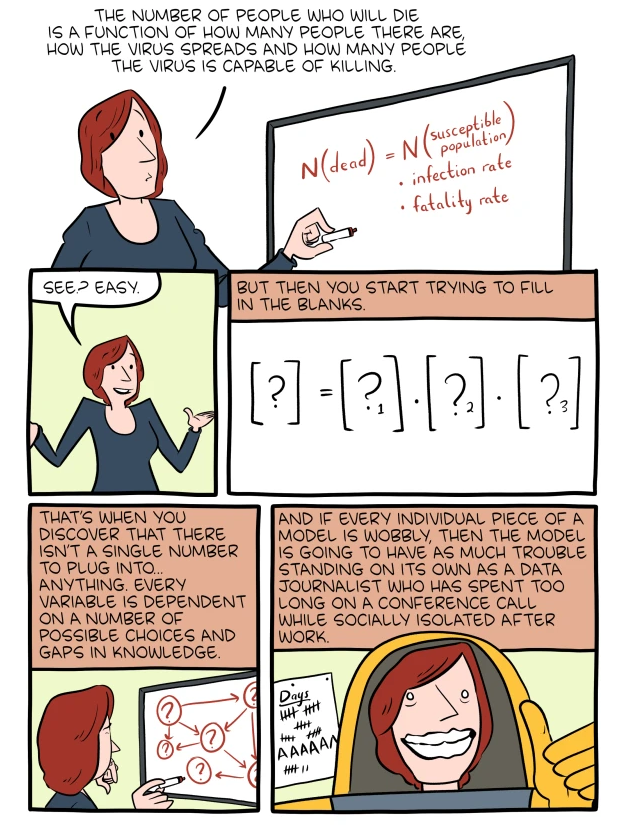You are watching people go through withdrawal from the emotional addiction to the myth of certainty.
Ashley C. Ford, on Twitter
This feels like the most true, and succinct thing I’ve seen someone say about living through this pandemic. I see it in the leaders who waited too long to take serious measures, or who rush to hastily back toward what they think will be a familiar normalcy.
I have had this ongoing feeling during the pandemic that, while many things are different, people and institutions have become a more concentrated version of what or who they are. A friend who craves social contact craves it more as it becomes harder to access, prisons and jails are dangerous and deadly places, those who feel entitled to space take it up when space is a measure of safety and concern. Within this concentration, it feels particularly stark how those who can expect certainty struggle to grapple with the amount of uncertainty we now all face. And for those who live in daily uncertainty, this moment feels different, perhaps, but no more dire.
Vee L. Harrison wrote for the Tribe about a Chicago house party that got a lot of attention as attendees seemly ignored social distancing recommendations, and (if you care about it) the law. The party, guests said, was thrown to celebrate the lives of two people who were shot and killed. When I lived on the West Side, there was this sense of the elusiveness of life, whether it was the gunshots, or a memorial to someone who had been killed or someone passed out from an overdose. Space and safety feel so significant. When I ran, I had to make sure to give people a lot of space, because running could signal alarm and wasn’t a common fun activity. I had to think about how to navigate the space of people who were at work in the drug trade. As I fished for my wallet to get on the bus, a woman once warned me about taking out my wallet too conspicuously. And the thing about all of those perceived risks, is that they could be totally fine. The line between normal and dangerous felt so blurry. It makes sense that COVID-19 is just another one of these things, and not the thing.
One of the subjects of the article said this:
I’ll stay in the house if you come build me a basketball court like you got in your house. Come put a zoo in my backyard. These rich people got things to do while they sit in the house. Us people that aren’t as rich as them, we don’t have nothing to do in the house. Sometimes this can cause you to go into boredom and depression and you have to get out, you have to get some air.
Tink Purcell, talking about (mostly) complying with social distancing, but how that’s hard.
It is a privilege to not be bored as the world gets smaller. I am so glad for the cooking, baking, sewing, wood, coding and all the other projects I see people I know post on social media. Pleasure feels hard to come by these days, but I have found pleasure, or at least the comfort of agency, or being able to see a straight line from the beginning of something to the end in little projects. And while I am proud of the time and persistence I have put into developing the skills to do some of these things, the first steps, or even the belief that it is possible to do these things for yourself was given to me by others. I am grateful for the people and institutions that have given me these gifts, some accepted gladly, others reluctantly, some rebuked until many, many years later. But I know these gifts aren’t universally given.
When heath or housing or food feel so precarious, boredom seems like a trivial thing, but, throughout my life, it has also felt like one of the heaviest weights. It could be because I have not often, or for very long, had to question my health, housing or access to food, but I still think that there is something essential to life as it should be that everyone has things in their life that make one day different from the next, or worthy of anticipation or that they can feel their mind widening or diving deeper inside. So, when I hear about basketball hoops being taken down, I also wonder what is being given in their place? It isn’t too much to ask that we are encouraged to be, and supported to be both safe (and considerate of others safety) and also enlivened.

